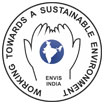BackgroundNational Afforestation Programme (NAP) is a major forestry scheme of the Government of India in which afforestation and related activities are intended to be implemented through public participation having joint forest management and eco-development committees. This scheme is being implemented by the National Afforestation and Eco Development Board (NAEB), Ministry of Environment and Forests, Government of India. This is a 100% centrally sponsored scheme (CSS) and started in the 10th Five Year Plan with a two-tier institutional structure i.e. Forest Development Agency (FDA) and Joint Forest Management Committee (JFMC) or Eco-Development Committee (EDC). The village is reckoned as a unit of planning and implementation and all activities under the programme are conceptualized at the village level. This decentralized two-tier institutional structure allowed greater participation of the community, both in planning and implementation, to improve forests and livelihoods of the people living in and around forest areas. The two-tier approach, apart from building capacities at the grassroot level, significantly empowered the local people to participate in the decision making process. This approach has further been decentralized in 2009 when the Ministry of Environment and Forests (MoEF), Govt of India issued Revised Operational Guidelines for NAP and further involved the State Forest Departments by forming a third tier i.e. State Forest Development Agency which is federation of all FDAs of the state and act as an umbrella agency . ObjectivesThe main objectives of this project are:
Organizational StructureThe project is implemented in the state through a three-tier system having:
Each of the above is a registered body having separate account in any nationalized bank. Each of the above will have two bodies namely general body and executive body Joint Forest Management Committee / Eco-Development Committee (JFMC/EDC) A JFMC/EDC is the implementing agency at the village level. A JFMC is formed for a village or a cluster of villages situated adjacent to Reserved Forests (RF) and is registered with the concerned Territorial Divisional Forest Office. Likewise an EDC is formed for a village or a cluster of villages situated adjacent to National Park or Wildlife Sanctuaries and is registered with the respective Wildlife Divisional Forest Office. The composition and functions of the JFMCs /EDCs would be as follows: General Body
Executive Body
Each JFMC/EDC shall have a separate account in a Nationalised Bank or a Cooperative Bank or a Post Office, which would be jointly operated by the President and the Member Secretary. Besides this, each JFMC or EDC will have a Village Development Fund (VDF). Functions of JFMCs/ EDCs –
[Top] | [Back to Organizational Structure] Forest Development Agency (FDA) FDAs can be formed only in Territorial and Wildlife Divisions as per the Government of India norms. In Sikkim there are 9 FDAs for 4 Territorial Divisions and 5 Wildlife Divisions including one for KNP. All of them are registered under the Societies Registration Act, 1860. Each FDA is a federation of all JFMCs/ EDCs registered in that forest division. The model structure of a FDA is as follows: General Body
The General Body will meet at least once in a year. A person who has served on the General Body would be eligible for re-nomination after two years of the expiry of his previous tenure. Executive Body
The Executive Body will meet at least once in three months. A member who does not attend three consecutive meetings of the Executive Body shall be disqualified from the Executive Body. Executive Body of the FDA will co-opt the experts (without voting rights) in such disciplines as are not represented to advice on the preparation of microplans and for implementing specific components of the projects. Roles and responsibilities of FDAs
Note: FDAs will sign a Memorandum of Understanding (MoU) with the JFMCs/ EDCs implementing the Scheme indicating mutual obligations, rights and roles. The MoU should, essentially, include the right of FDAs to stop and withdraw funding from a JFMC/ EDC if their performance is found to be unsatisfactory, along with the procedure to be adopted in such cases. The FDAs, in turn, would also sign a similar MoU with the SFDA. [Top] | [Back to Organizational Structure] State Forest Development Agency (SFDA) SFDA is the Federation of all FDAs of the state and act as an umbrella agency. It is also a registered society under the Societies Registration Act, 1860. There shall be only one SFDA for a state with a General Body and an Executive Body having following indicative structure. General Body
General Body will meet at least once a year. Executive Body
The Executive Body can co-opt other Members as and when necessary. It will meet as often as necessary as but not less than twice a year. Roles and responsibilities of SFDA
[Top] | [Back to Organizational Structure] Physical & Financial Targets [Top]Contact Us Dr. Thomas Chandy, IFS
Shri. C. S. Rao, IFS
|
FORESTS, ENVIRONMENT & WILDLIFE MANAGEMENT DEPARTMENT Government of Sikkim
ENVIRONMENT Quick Links: SoE Report |
Pollution |
Status & Issues |
EIA/EMP |
SEIAA/SEAC |
Clearances |
Public Notice |
NEAC |
NGC |
...More
BIODIVERSITY Quick Links: Flora & Fuana |
State Biodiversity Board |
State Biodiversity Rules |
State Biodiversity Action Plan |
Medicinal Plants & NTFP |
IBAs |
Bamboo Species | ...More
WILDLIFE Quick Links: Protected Areas |
Himal Rakshaks |
Conservation Zones |
Prespective Management Strategies |
...More
FOREST & FORESTRY Quick Links: Forest Types of Sikkim |
Forest Management |
Forest Statistics | ...More
LAND & WATER Quick Links: Wetlands |
Wastelands |
Treatment of Landslides & Soil Erosion Control |
Pokhri Sangrakshan Samiti |
...More
ECOTOURISM Quick Links: White Paper on Ecotourim Policy |
Sikkim Trekking Regulation |
Ecotourism Destinations |
Sacred Natural Sites | ...More
SERICULTURE Quick Links: Sericulture Directorate |
Beneficiaries |
Silk Industry |
Eri & Muga Sectors |
Marketing, Infrastructure & Employment

